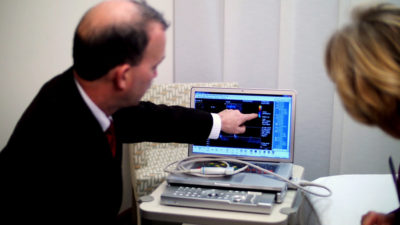 Varicose Veins
Varicose Veins
Varicose Veins are the large bulgy veins on the legs that result from faulty valves. Veins have valves that prevent the blood from backing up when you stand. When the valves “leak” the blood backs up in the affected vein, and all the veins trying to drain into that affected vein the result is large, dilated “ropey” veins.
Varicose Veins have many causes, but the most common factors contributing to varicose veins are:
- Heredity: If your parents have varicose veins, you are much more likely to develop them. This is likely related to the fact that such patients may have less elastic tissue in their valves, predisposing them to fail.
- Pregnancy: During pregnancy your blood volume doubles, stretching out the venous valves, sometime to the point of failure, and subsequent varicose veins.
- Female Sex- Yup, just being female is a risk factor for varicose veins. Presumably, cycling hormones soften and weaken the valves over time, causing them to fail.
Symptoms: Varicose Veins often cause symptoms such as heaviness, aching, swelling , pain, itching (especially at the ankles) cramping at night, inflammation of the skin, and even browning and discoloration of the skin. If left untreated varicose veins generally only worsen over time. Compression hose, weight loss and exercise sometimes will relieve symptoms, but these actions will not reverse the process. Varicose Veins can lead to other health issues such as Superficial venous Thrombosis, Deep venous thrombosis, Dermatitis near the ankles (called stasis dermatitis), and even leg ulcers.
When a vein that is in, or just under the skin, becomes dilated it leads to a red or purple vein we call a spider vein. They look like a spider’s web, hence the name.
 Spider Veins
Spider Veins
They are presumed to be the result of years of the effect of circulating female hormones, which soften and weaken the walls of these veins. When they dilate they fill with more blood and become more visible. They can also accompany varicose veins and be the result of the back-up of blood in the larger veins which is then transmitted to the smaller veins.
Spider veins alone usually do not cause symptoms, but are more of a cosmetic concern. At Locastro vein Center the spider veins are treated with the injection of a fluid called a sclerosing agent. This helps gently close down the vein so it is less visible.
Spider vein treatments, unless they are accompanied by varicose veins, are not covered by insurance, as they are considered cosmetic. Our prices to treat spider veins are very competitive, and the doctor and staff can discuss that with you after the initial consultation.